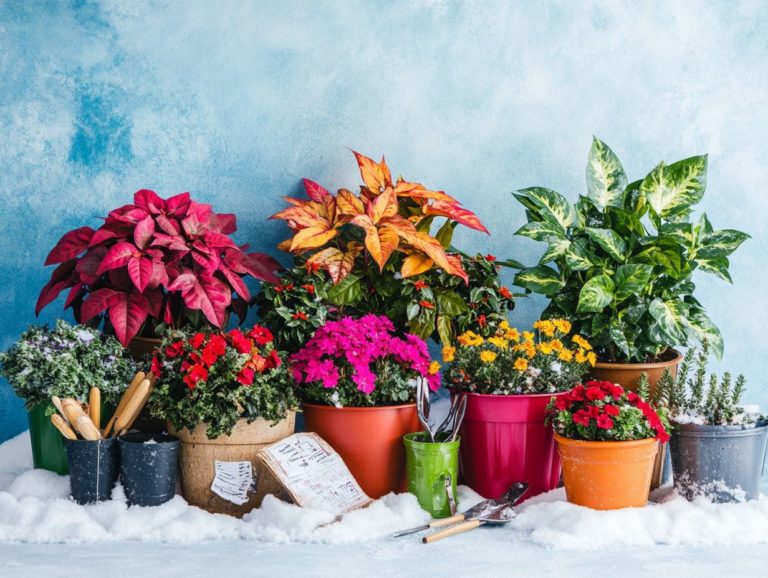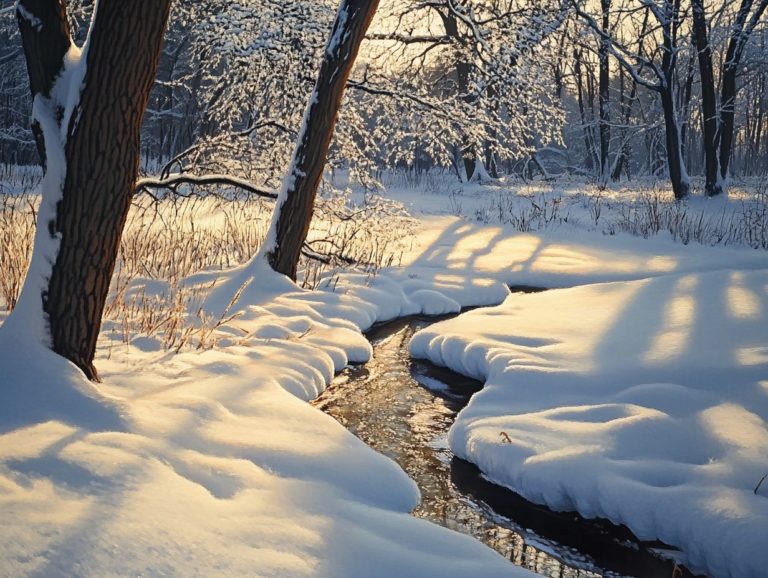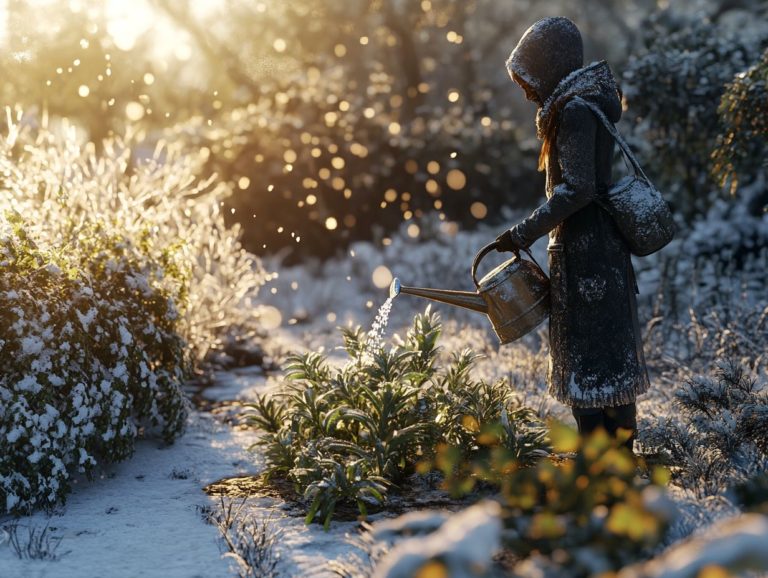How to Protect Your Plants in Cold Weather
As winter approaches, you may find yourself contemplating how to protect your beloved plants from the harsh elements. The cold temperatures can be particularly unforgiving, often causing frost damage and stunted growth even for the hardiest greenery.
This article offers vital insights into how low temperatures affect your plants and provides practical steps for readying your garden before the chill sets in. From protective measures during frosty nights to recovery strategies once the cold has passed, you’ll learn how to keep your plants thriving throughout the winter months and beyond.
Whether you re a seasoned gardener or just starting on this green journey, these tips will empower you to ensure your plants emerge healthy and vibrant come spring, especially after dealing with early frost.
Contents
- Key Takeaways:
- Understanding Cold Weather and Plants
- Preparing Your Plants for Cold Weather
- Protecting Plants During Cold Weather
- Dealing with Frost and Freezing Temperatures
- Caring for Plants After Cold Weather
- Preventing Future Cold Weather Damage
- Frequently Asked Questions
- How to Protect Your Plants in Cold Weather: What are the best ways to protect my plants from frost?
- How to Protect Your Plants in Cold Weather: Should I water my plants in cold weather?
- How to Protect Your Plants in Cold Weather: What temperature is considered too cold for plants?
- How to Protect Your Plants in Cold Weather: Can I use plastic to cover my plants during a freeze?
- Protecting Your Potted Plants in Cold Weather
- Do Dormant Plants Need Protection in Winter?
Key Takeaways:
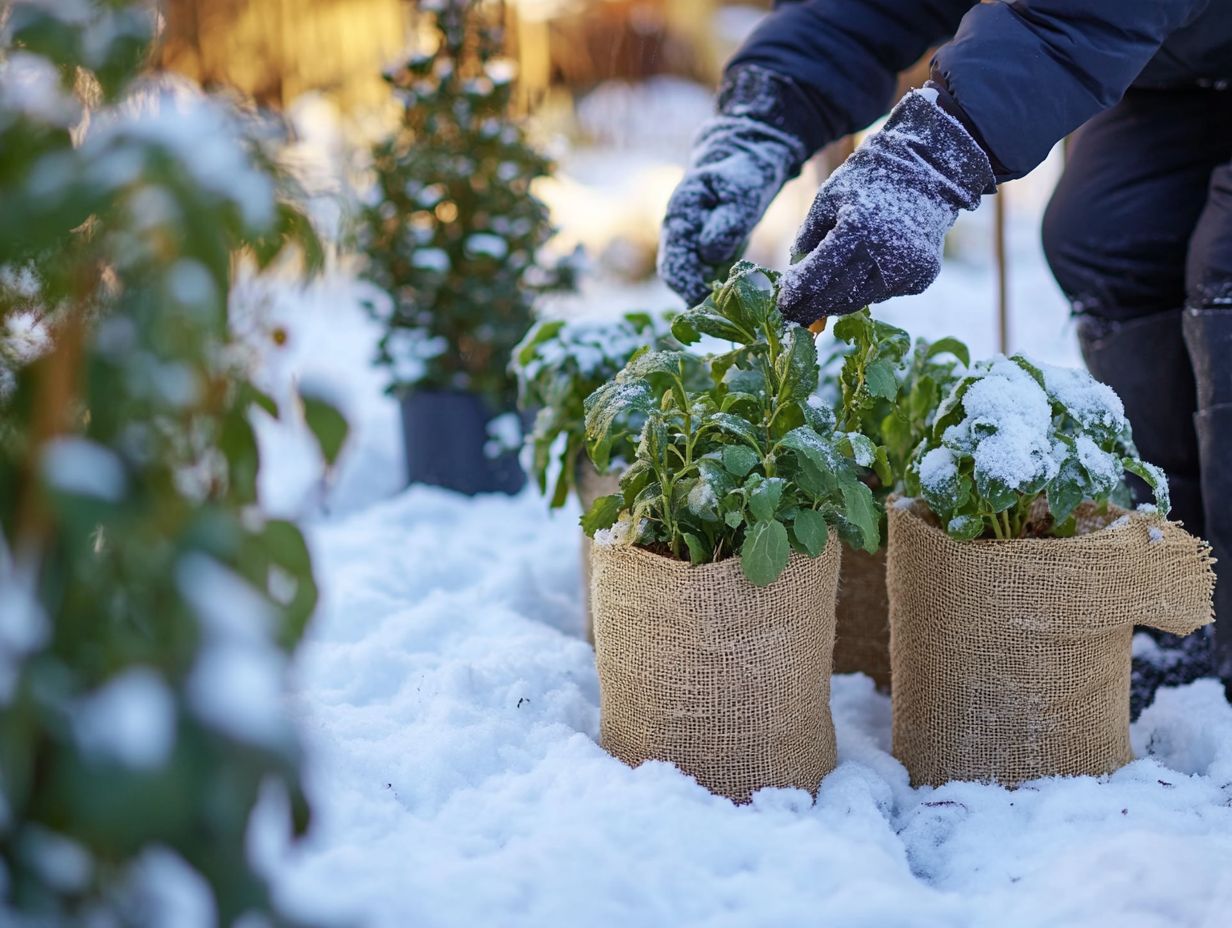
- Understand how cold weather affects plants to better prepare for winter.
- Take proactive steps before the cold hits to protect your plants from damage.
- Learn methods for insulating and saving plants from frost and freezing temperatures.
Understanding Cold Weather and Plants
Understanding how cold weather affects your plants is essential, especially as the seasons shift from autumn to winter and eventually to spring. This knowledge is critical for managing cold snaps and ensuring your garden’s health. With the arrival of low temperatures and freezing conditions, you need to recognize how these elements can lead to frost damage, which harms everything from your annuals to those prized tropical plants.
As the seasons change, particularly between September and March, keeping an eye on local frost advisories and freeze warnings issued by the National Weather Service becomes crucial act now! This proactive approach helps you safeguard your cherished plants effectively.
How Cold Weather Affects Plants
Cold weather can significantly impact your plants, exposing them to frigid air and fluctuating soil temperatures that may lead to serious frost damage, particularly in sensitive varieties like vegetables, annuals, and tropical plants.
When temperatures drop, cold air can seep into the protective layers of your plants, chilling their tissues and disrupting the essential processes plants use to grow. This chilling effect also lowers soil temperatures, making it tough for roots to absorb the nutrients and water they need.
Different types of plants respond uniquely to these harsh conditions. For instance, frost-sensitive species such as tomatoes and peppers may struggle when temperatures fall below 32 F, while cold-hardy varieties like kale and broccoli can endure temperatures as low as 20 F.
Understanding these critical thresholds is essential for you as a gardener or farmer, especially if you’re looking to protect your crops from the potential dangers of unexpected cold snaps.
Preparing Your Plants for Cold Weather
Preparing your plants for cold weather is essential for their survival and health during chilly temperatures and early frosts. Consider using some of the top 10 plant protectors for cold climates to ensure they thrive.
As late spring approaches and the threat of cold snaps begins to wane, taking these steps becomes even more critical, particularly after the first freeze has passed.
Steps to Take Before the Cold Hits
Before the cold sets in, it’s crucial to take proactive steps. Use a frost blanket for outdoor preparation and relocate delicate indoor plants like aloe or tulips to more sheltered environments.
These preparations not only protect your vulnerable plants but also help maintain a flourishing garden amid drastic temperature shifts. It s wise to start this process a few weeks ahead of the anticipated frost date.
Check local weather forecasts regularly to stay updated on frost advisories. If you have fragile plants outside, such as daffodils, consider bringing them indoors or adding extra insulation with mulches to shield them from cold air.
Set up windbreaks to protect more sensitive plants from biting winter winds. By taking these measures, you ll preserve the vitality of your garden and bolster its resilience against winter weather.
Protecting Plants During Cold Weather
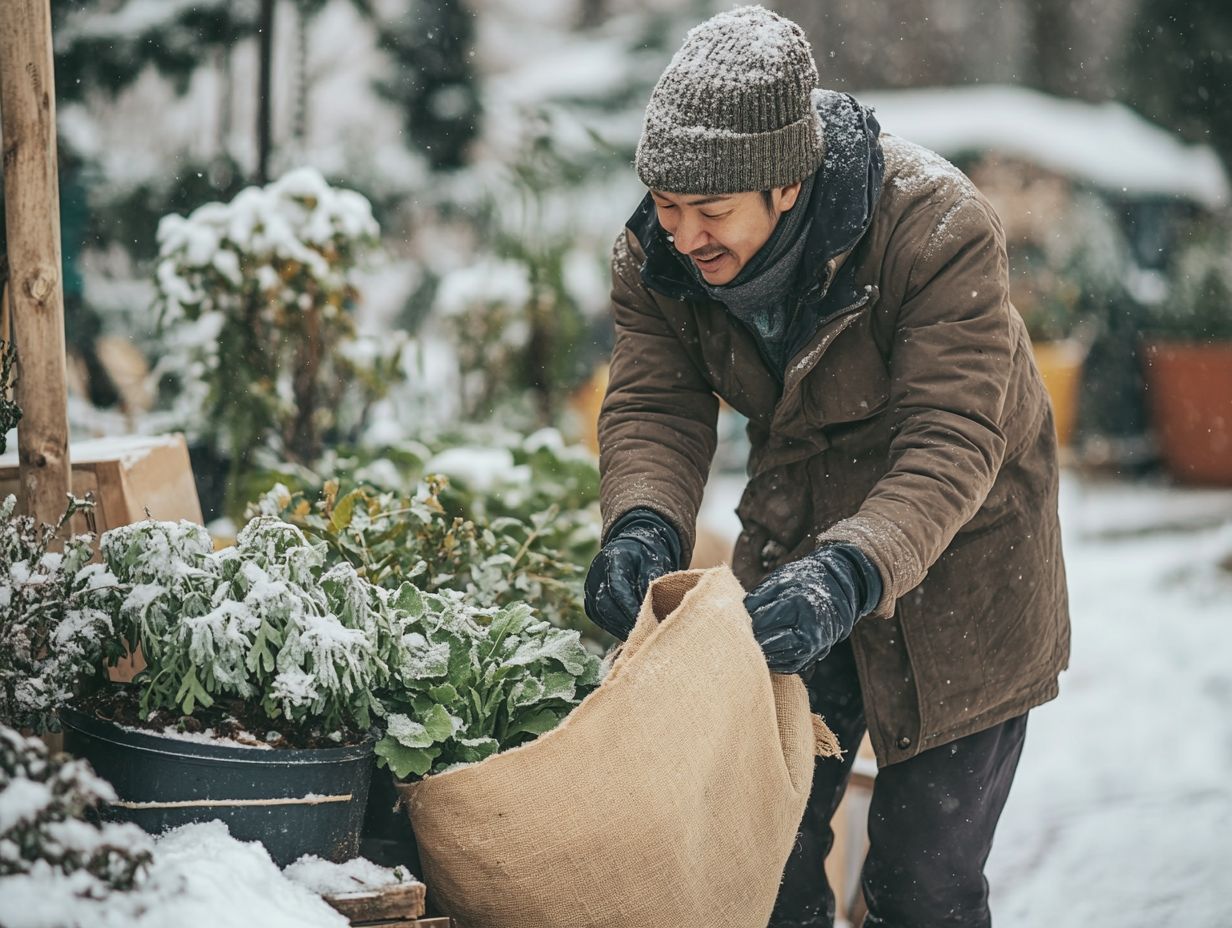
Protecting your plants during cold weather requires several methods designed to insulate and shield them from harsh temperatures. One effective option is using insulated plant pots for cold weather. Implement these strategies to ensure that both your outdoor plants and delicate species not only survive but thrive, even in chilling conditions.
Methods for Insulating and Protecting Plants
Safeguard your plants from frost damage during chilly weather using various methods:
- Cover plants with a frost blanket.
- Use a mulch layer for added insulation.
- Consider row covers and cloches to shield plants and trap sun’s heat.
- Use straw or hay as mulch to keep the soil warm and insulate the roots.
- Incorporate heavy materials that hold heat, like rocks or water barrels, to enhance warmth retention overnight.
Each method has its benefits: frost blankets are lightweight and easy to install, while row covers facilitate air circulation, reducing the risk of mold. Timing is key put these protective measures in place before temperatures drop.
Dealing with Frost and Freezing Temperatures
Navigating frost and freezing temperatures requires awareness of essential indicators, especially the dates of the first frost and first freeze. These dates can vary significantly by location.
Utilizing resources like frost advisories and freeze warnings is essential for any serious gardener, especially in climates like USDA Zone 8a or Puget Sound.
How to Save Plants from Frost Damage
When faced with frost damage, assess the extent of the cold’s impact and implement immediate winter protection measures.
Examine the affected plants, noting any discolored leaves or damaged limbs needing attention. Once you gauge the frost damage’s severity, prune by removing dead or severely affected parts to encourage new growth and improve airflow.
Ensure the plants are adequately watered after pruning. Keeping them hydrated prevents shock and supports recovery, especially after freezing temperatures. Add mulch around the base to insulate the roots, and use coverings like burlap or garden fabric for further protection against cold spells.
Timeliness is crucial; acting quickly can boost your plants’ chances of recovery. Regularly monitor them for signs of recovery or distress, allowing you to adjust their care and ensure they thrive when warmer months arrive.
Caring for Plants After Cold Weather
Caring for your plants after winter requires a thoughtful recovery approach. Pay attention to soil temperature and consider the lingering effects of the cold on your plants’ health and growth.
Act now to protect your beloved plants and ensure a beautiful garden in the upcoming seasons!
Recovering and Reviving Plants After Cold Weather
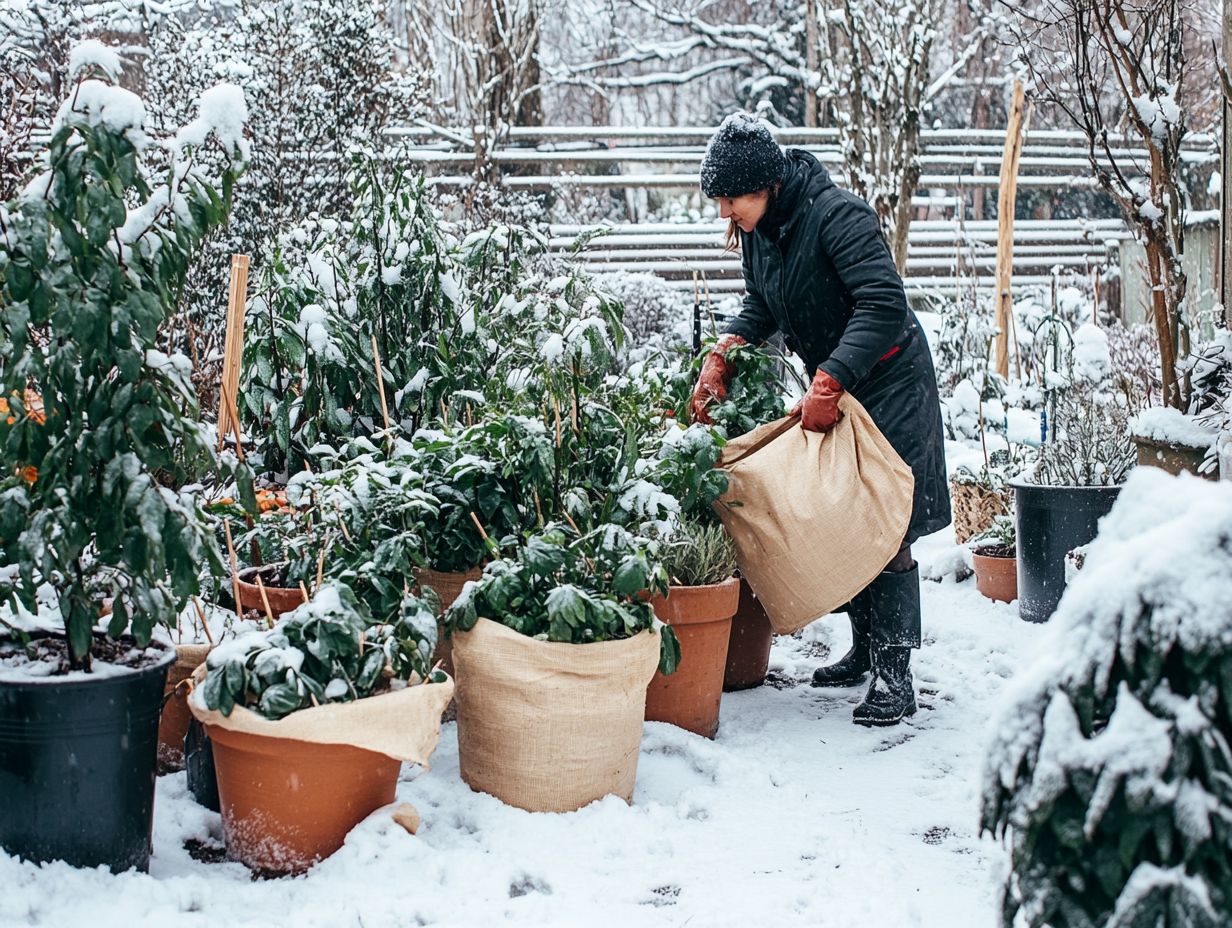
To successfully revive your plants after a cold spell, focus on nurturing both indoor and outdoor greenery while addressing frost damage.
- Start by assessing each plant’s condition. Look for signs of wilting, discoloration, or blackened leaves, which indicate frost damage.
- For indoor plants, gently remove any damaged leaves and place them in indirect sunlight to encourage healing.
- For outdoor plants, understanding soil moisture levels is crucial. A good watering session can help revive roots that have frozen too deep.
- Don’t forget to apply a balanced fertilizer to promote new growth.
- If the damage is serious, consider replanting in more suitable soil for a fresh start.
Watch for signs of recovery, such as new leaf growth or vibrant colors, indicating that your plants are improving.
Preventing Future Cold Weather Damage
To prevent future cold weather damage, implement long-term strategies that prioritize plant protection, such as being mindful of frost dates and using insulation techniques. For more effective methods, learn how to use covers for plant protection, like applying a layer of mulch.
By taking these proactive measures, you enhance your garden’s resilience against harsh winter elements.
Long-term Strategies for Protecting Plants
Long-term plant protection strategies involve consistent practices. Cover plants during cold snaps and implement effective winter protection for various types, including annuals and tropical varieties. For more insights, check out understanding the science of cold-weather plants.
A proactive approach extends beyond immediate actions; it requires thoughtful seasonal preparation and careful plant selection to enhance resilience against cold temperatures. Evaluate your garden layout and choose hardy varieties that thrive in colder climates to minimize winter damage risk.
Using mulch, row covers, and frost blankets effectively insulates roots and protects delicate leaves. Investing in products that enhance plant health, like organic fertilizers and soil amendments, boosts overall vigor, equipping your plants to withstand winter’s harsh elements.
Frequently Asked Questions
How to Protect Your Plants in Cold Weather: What are the best ways to protect my plants from frost?
The best ways to protect your plants from frost include covering them with a cloth or sheet, using a frost blanket, or bringing them indoors if possible. These methods help insulate and protect your plants from cold temperatures.
How to Protect Your Plants in Cold Weather: Should I water my plants in cold weather?
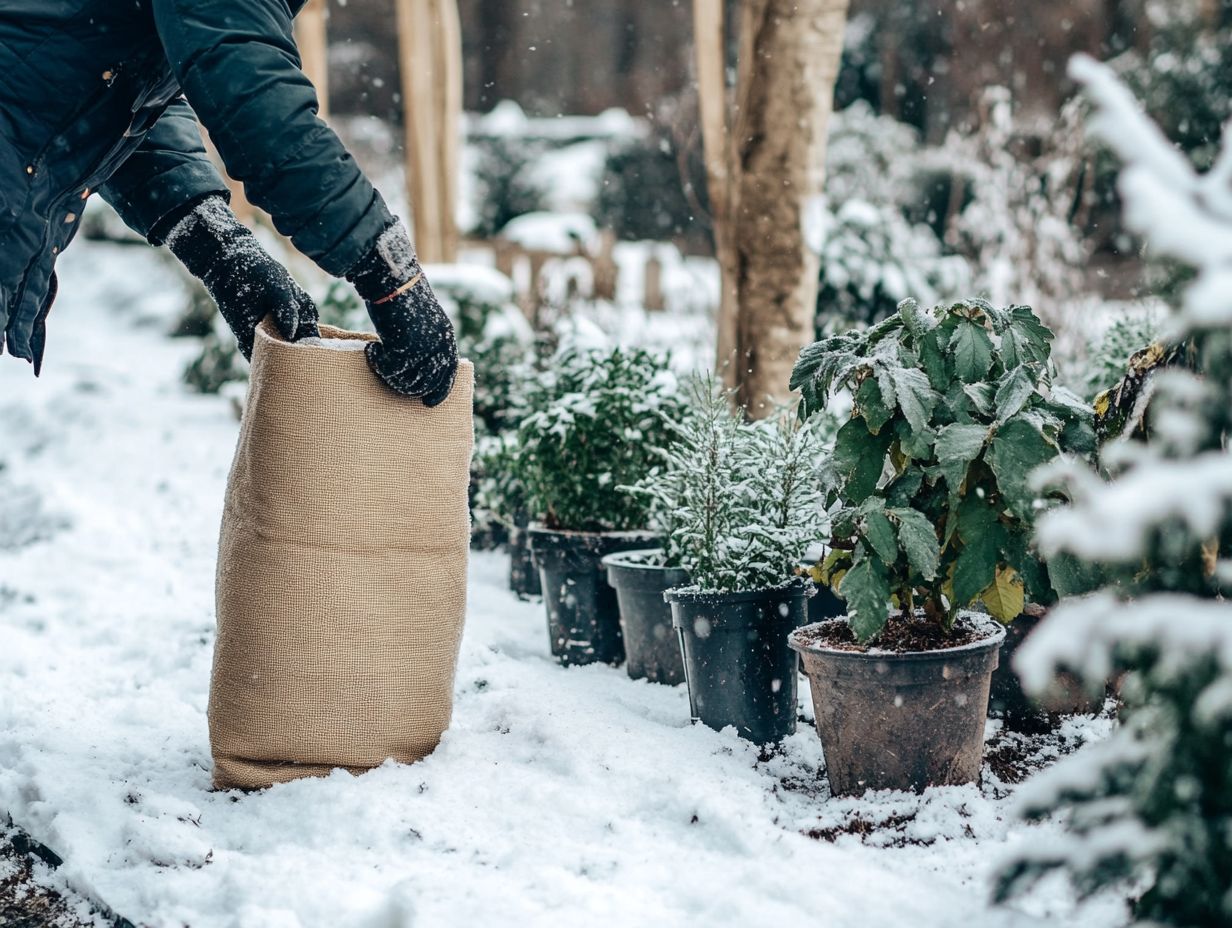
Yes, continue to water your plants in cold weather. While it may seem counterintuitive, watering can protect your plants. Wet soil retains heat better than dry soil, keeping the soil and roots warmer.
How to Protect Your Plants in Cold Weather: What temperature is considered too cold for plants?
The temperature varies by plant type, but generally, temperatures below 40 degrees Fahrenheit can harm most plants. Even temperatures above freezing can cause damage with strong winds or frost.
How to Protect Your Plants in Cold Weather: Can I use plastic to cover my plants during a freeze?
While plastic may seem effective for protection, it can cause more harm than good. Plastic traps moisture and heat, potentially overheating your plants during the day. It can also create a greenhouse effect, leading to fungal growth and reduced air circulation.
Protecting Your Potted Plants in Cold Weather
Potted plants are more vulnerable to cold than garden plants. Their roots are more exposed to the elements.
To keep them safe, move them to a sheltered area or wrap them in materials that keep heat in, like burlap or bubble wrap.
Do Dormant Plants Need Protection in Winter?
Dormant plants, which are not actively growing, are tougher against cold. However, protecting them during extreme cold is wise.
This prevents damage to roots or stems and helps your plants thrive come spring!


